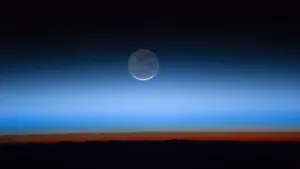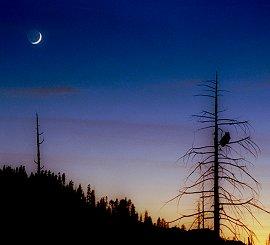How to see ghostly ‘Da Vinci glow’ illuminate the crescent moon this week
Posted
Last Updated
Twice-reflected sunlight subtly illuminates the dark limb of the crescent moon just before and after the new moon in a phenomenon called Earthshine, or ‘Da Vinci glow’.
A phenomenon called ‘Da Vinci glow’ will be visible on the dark limbs of the moon on successive days this week and again next weekend.

The subtle light — also known as “Earthshine” — is sunlight reflected first by Earth onto the lunar surface, then again into the eyes of the viewer. The effect is a faint, ghostly glow on the shadowed part of the moon’s Earth-facing side.
It’s only possible to see Da Vinci glow when a slim crescent moon is visible close to the horizon during both the last few days and the first few days of the moon’s orbit of Earth, which happens this week.
Da Vinci glow is named after Italian genius Leonardo da Vinci, who in the 15th century described the phenomenon as caused by sunlight being reflected by Earth’s oceans to illuminate the moon’s dark surface, according to NASA.
However, the primary causes of Da Vinci glow are actually clouds and sea ice, according to NASA.
‘Da Vinci glow’ is also sometimes called “moon glow” or “ashen glow” and, in folklore, either the “new moon in the old moon’s arms” (for a waning crescent moon) or the “old moon in the new moon’s arms” (for a waxing crescent moon), according to Almanac.com.
Read more at livescience.com.

